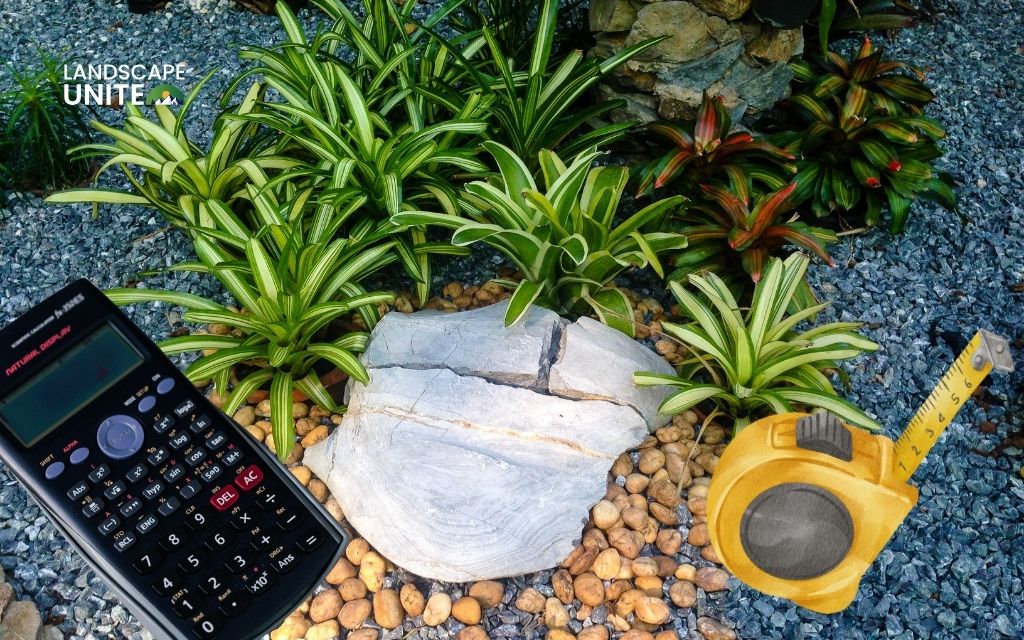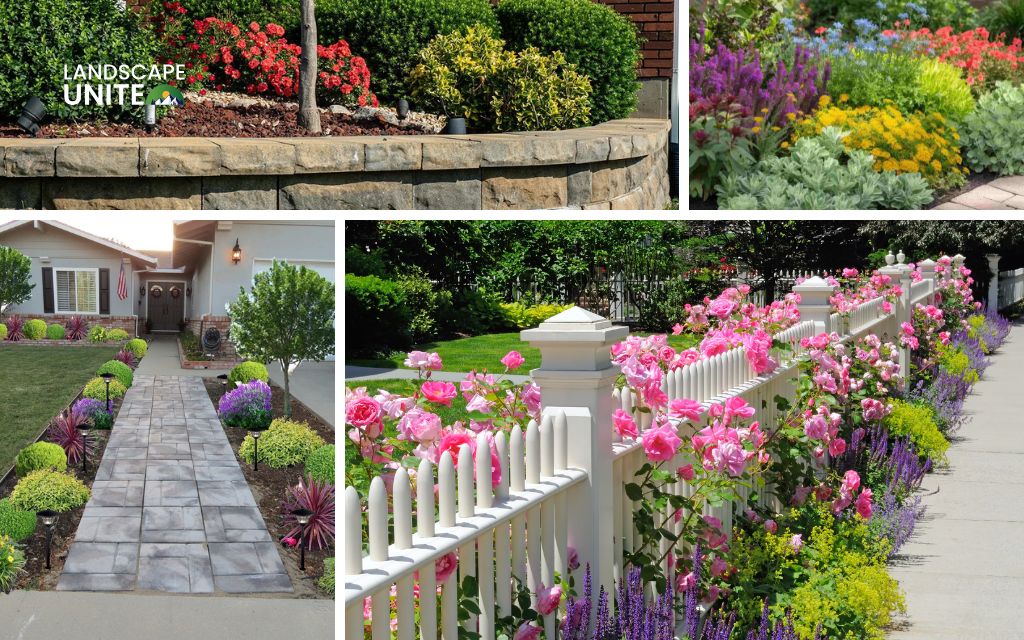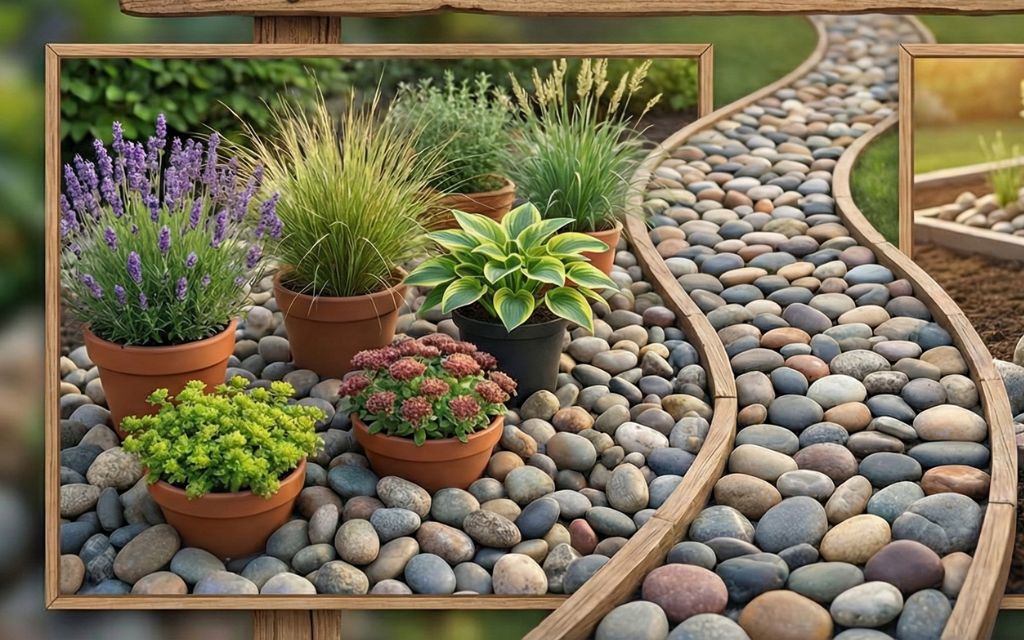Creating your first flower garden transforms any outdoor space into a vibrant, living masterpiece that brings joy throughout the seasons. Whether you’re dreaming of colorful cottage garden borders or elegant formal displays, learning how do you make a flower garden is more achievable than you might think.
Did you know that flower gardens have existed for over 2,500 years, with archaeological evidence showing ornamental plantings in ancient Persia? Today’s gardeners benefit from centuries of accumulated wisdom, making it easier than ever to create beautiful outdoor spaces. This comprehensive guide walks you through every essential step, from selecting the perfect location and preparing your soil to choosing the right flowers and maintaining your garden for long-term success.
With proper planning and the right techniques, you’ll discover how to make a flower garden that not only survives but thrives, creating a beautiful outdoor sanctuary that can even reduce your home’s cooling costs by up to 9% through strategic placement. Let’s explore the fundamental principles that will help you create the flower garden of your dreams, regardless of your experience level or garden size.
Planning your flower garden layout
Before you dig a single hole, successful flower bed preparation starts with thoughtful planning. Think of this phase as creating a blueprint for your outdoor masterpiece. Your planning decisions now will save you countless hours of frustration later.
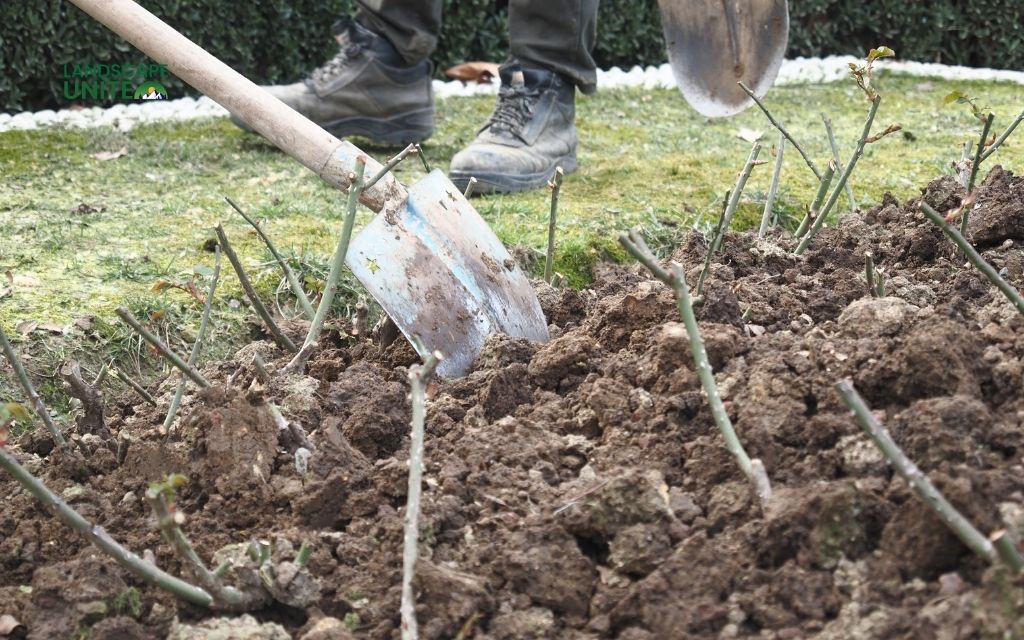
Choosing the perfect location for maximum blooms
Where should you position your flower bed? The answer depends on what you want to grow. Most flowering plants need at least six hours of direct sunlight daily to produce abundant blooms. Walk around your property at different times throughout the day, noting where sunlight falls and for how long.
When you’re figuring out how do you make a flower garden that thrives, consider these location factors. Look for spots with good air circulation but protection from harsh winds. Areas near walls or fences on the south or west sides typically receive the most consistent sun exposure. If you’re planning flower beds for beginners, start with a manageable space rather than overwhelming yourself with a large area.
Pay attention to existing landscape features. Trees and large shrubs compete with flowers for water and nutrients, so maintaining adequate distance ensures your blooms get the resources they need. For those interested in easy flower beds, selecting naturally sunny, open areas minimizes ongoing maintenance challenges.
Measuring and designing your garden space
Once you’ve selected your location, it’s time to map out your garden dimensions. For your first project, consider starting with a simple flower bed measuring 3 to 4 feet wide and 6 to 8 feet long. This size provides enough space for visual impact without requiring excessive maintenance.
Use a garden hose or rope to outline potential shapes on the ground. Step back and view the layout from multiple angles, including from inside your home where you’ll see it most often. Consider how the flower bed on side of house or in front will complement your home’s architecture. Curved edges typically create a more natural, flowing appearance compared to rigid straight lines.
When planning a flower bed in front of house, think about sight lines and accessibility. You’ll need to reach all areas for planting, weeding, and maintenance without stepping on your plants. Creating pathways or positioning beds within arm’s reach from all sides makes ongoing care much simpler.
Understanding sun, shade, and microclimates
Your garden contains unique microclimates that affect plant performance. These are small areas where conditions differ from the surrounding environment. A spot next to a south-facing brick wall stays warmer and drier than an open area just ten feet away. Understanding these variations helps you match plants to their ideal conditions.
Observe your space through different seasons if possible. Winter sun angles differ dramatically from summer patterns. Areas that seem shady in summer might receive full sun during spring when deciduous trees haven’t leafed out yet. This knowledge proves invaluable when making a flower bed that performs beautifully year-round.
Consider reflected heat from pavement, walls, and windows. These surfaces intensify sunlight and create hotter, drier conditions. While some heat-loving flowers thrive in these spots, others wilt under the stress. Smart plant selection based on these microclimates sets you up for success when learning how do you make a flower garden that flourishes in your specific conditions.
Essential soil preparation for flower gardens
Healthy soil creates healthy plants. This fundamental truth cannot be overstated. Many gardeners rush past soil preparation, eager to see flowers blooming, but investing time here pays enormous dividends. Your soil provides everything your plants need to establish strong roots and produce abundant flowers.
Testing and improving your garden soil
How do you make a flower garden with soil that supports vigorous growth? Start by understanding what you’re working with. Soil testing removes the guesswork from amendments. Home testing kits available at garden centers provide basic information about pH levels and major nutrients. For more detailed analysis, contact your local extension office for professional testing services.
Most flowering plants prefer slightly acidic to neutral soil with a pH between 6.0 and 7.0. However, some plants have specific requirements. Knowing your baseline allows you to make targeted improvements rather than guessing. Test results also reveal nutrient deficiencies and excess levels that might harm plants.
Simple soil texture test:
- Take a handful of moderately moist soil
- Squeeze it firmly in your palm
- Open your hand and observe
What it means:
- Forms a tight ball that won’t crumble = Heavy clay soil (drains poorly)
- Falls apart immediately = Sandy soil (drains too quickly)
- Holds together loosely and crumbles easily = Ideal loam soil
Adding organic matter and amendments
Organic matter improves virtually any soil type. Compost, well-rotted manure, leaf mold, and similar materials transform problematic soils into thriving growing environments. These amendments improve drainage in heavy clay while helping sandy soils retain moisture and nutrients.
For new flower bed preparation, spread a 3 to 4 inch layer of organic matter over your designated area. Work it into the top 8 to 12 inches of existing soil using a garden fork or tiller. This creates an ideal environment for developing roots. If you’re wondering how to build a flower bed from scratch, this step absolutely cannot be skipped.
The concept of building soil health extends beyond a single application. Healthy soil teems with beneficial microorganisms, earthworms, and other creatures that process organic matter into forms plants readily absorb. These living systems take time to develop but create self-sustaining fertility that reduces your ongoing input needs. For those interested in easy flowerbeds, establishing strong soil biology means less work over time.
Creating proper drainage for healthy roots
Poor drainage kills more flowers than almost any other factor. Plant roots need oxygen, and waterlogged soil suffocates them. Even water-loving plants require some drainage to prevent root rot. If water stands in puddles for more than a few hours after rain, you have drainage problems requiring attention.
For inground flower bed installations with poor drainage, consider creating raised or mounded flower beds. Building beds 6 to 12 inches above the surrounding grade ensures excess water drains away from plant roots. This simple technique solves many drainage issues without expensive interventions.
Another approach involves incorporating coarse materials like perlite, vermiculite, or coarse sand into heavy soils. These materials create pore spaces that allow water to move through the soil profile more freely. Some gardeners install drainage systems for severely problematic areas, but most home flower gardens respond well to organic matter additions and proper bed elevation.
Selecting the right flowers for your garden

Plant selection determines your garden’s success more than any other decision. With thousands of flowering plants available, how do you choose? Focus on plants suited to your growing conditions, maintenance preferences, and aesthetic goals.
Annuals vs. perennials: making smart choices
Understanding the difference between annuals and perennials guides your plant purchases. Here’s a quick comparison:
| Aspect | Annuals | Perennials |
| Lifespan | One growing season | Return year after year |
| Initial Cost | Lower per plant | Higher per plant |
| Long-term Value | Replant yearly | One-time investment |
| Bloom Duration | Continuous all season | Specific bloom periods |
| Maintenance | Moderate (replanting needed) | Lower once established |
| First Year Impact | Immediate full blooms | Often modest first year |
The perennial “3-year rule”: Many gardeners don’t know that perennials follow a predictable pattern. They sleep the first year (establishing roots underground), creep the second year (modest growth above ground), and leap the third year (full, vigorous performance with abundant blooms).
For best flowers for beginner gardeners, combine both plant types. Use perennials as your garden’s backbone, providing structure and reliable seasonal interest. Fill gaps with annuals that deliver continuous color all season long. This strategy creates visual interest while you wait for perennials to mature.
Top easy-care flower choices:
Annuals for continuous blooms:
- Petunias
- Marigolds
- Zinnias
- Geraniums
- Impatiens
Reliable perennials:
- Daylilies
- Coneflowers (Echinacea)
- Black-eyed Susans
- Salvia varieties
- Sedum
Native plants and the 70/30 rule for success
Have you heard about the 70/30 native plant rule? This lesser-known principle suggests composing 70% of your garden from native plants adapted to your local ecosystem, with 30% reserved for non-native ornamentals. This approach supports local pollinators, birds, and beneficial insects while reducing maintenance requirements.
Native plants evolved alongside your region’s rainfall patterns, temperatures, and soil types. They naturally resist local pests and diseases, reducing the need for interventions. Once established, natives typically require little supplemental watering, making them ideal for low maintenance flower garden guide planning.
Research which plants are native to your specific region before shopping. Local nurseries increasingly stock native species, and specialized native plant nurseries offer extensive selections. When you’re learning how do you make a flower garden that supports local ecology, native plants provide the foundation for a thriving, balanced ecosystem.
Combining natives with carefully selected non-natives creates gardens that benefit wildlife while satisfying your aesthetic preferences. Many beloved garden flowers like roses and tulips aren’t native to most regions but integrate beautifully when balanced with native species.
Color coordination and bloom time planning
Strategic color planning creates cohesive, visually appealing gardens. Do you want a riot of mixed colors or a refined palette? Both approaches work beautifully when executed thoughtfully. For easy flower garden design ideas, start with a limited color scheme of two or three complementary colors.
The color wheel guides combinations that please the eye. Colors opposite each other (complementary colors) create vibrant contrast, think purple and yellow or blue and orange. Colors adjacent on the wheel (analogous colors) blend harmoniously, like blues, purples, and violets together. White flowers serve as peacekeepers, bridging different color combinations and preventing clashes.
Beyond color, plan for succession blooming that extends visual interest across growing seasons. Early spring bulbs transition to summer perennials, followed by fall-blooming plants. When making flower beds, select plants with overlapping bloom times so something always catches the eye. This strategic approach ensures your garden never looks empty or boring.
Consider foliage as well as flowers. Plants with interesting leaf colors, textures, and shapes provide appeal even when not blooming. Flower beds with shrubs incorporated as anchors add year-round structure and interest. This layered approach creates depth and maturity even in newly planted gardens.
Step-by-step flower garden planting guide
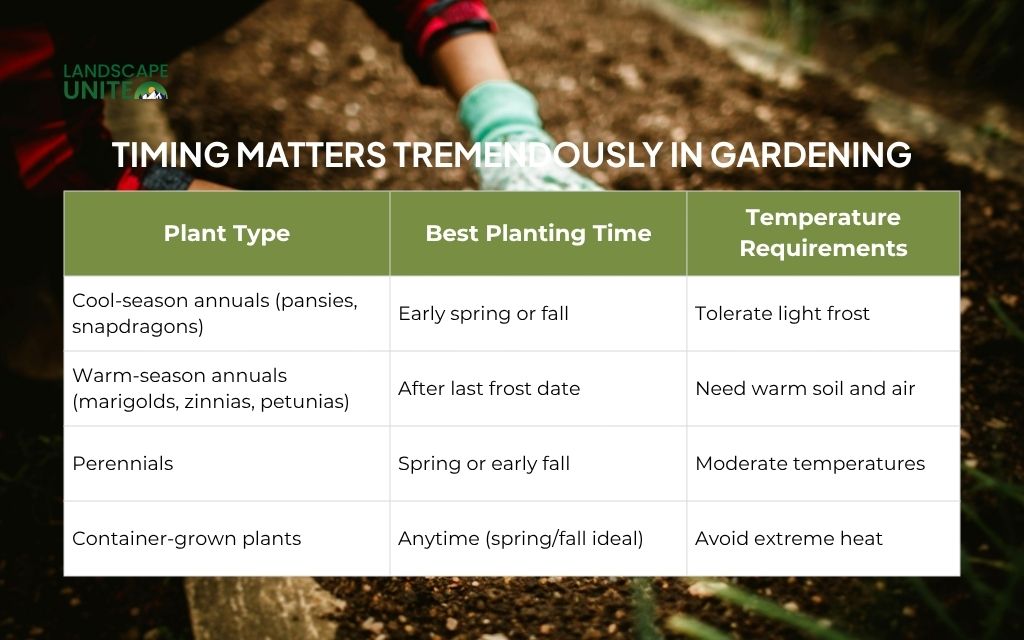
You’ve planned your layout, prepared your soil, and selected your plants. Now comes the exciting part where your vision takes physical form. Following proper planting techniques ensures your flowers establish quickly and thrive for years to come.
When to plant for best results
Timing matters tremendously in gardening. Use this simple guide:
| Plant Type | Best Planting Time | Temperature Requirements |
| Cool-season annuals (pansies, snapdragons) | Early spring or fall | Tolerate light frost |
| Warm-season annuals (marigolds, zinnias, petunias) | After last frost date | Need warm soil and air |
| Perennials | Spring or early fall | Moderate temperatures |
| Container-grown plants | Anytime (spring/fall ideal) | Avoid extreme heat |
Seasonal planting tips:
- Spring planting: Gives plants an entire growing season to develop strong root systems before winter.
- Fall planting: Works well in mild winter regions because cooler air temperatures combined with still-warm soil encourage root growth without summer heat stress.
- Summer planting: If you must plant during summer heat, do so during cooler evening hours and water thoroughly. Keep newly planted flowers consistently moist until they show signs of new growth.
Proper planting techniques and spacing
How to start a flower garden with healthy plants begins at planting time. Follow these steps:
- Remove plants gently from containers
- Tease apart circled roots if pot-bound
- Dig holes slightly wider than root ball (same depth)
- Position plants at the same depth they grew in containers
- Backfill with native soil, gently firming around roots
- Create a shallow basin around each plant
- Water thoroughly immediately after planting
Proper spacing prevents many future problems. Crowded plants compete for light, water, and nutrients while restricting air circulation that keeps foliage dry and disease-free. Check plant tags or research mature sizes before positioning plants. It’s tempting to space plants closer for immediate fullness, but patience creates healthier, more attractive gardens. For create flower bed projects, fill gaps temporarily with annuals while perennials mature.
Watering and initial care for new plantings
Newly planted flowers need consistent moisture until roots grow into surrounding soil. This critical establishment period typically lasts two to four weeks for annuals and an entire growing season for perennials. Water deeply rather than frequently, encouraging roots to grow downward seeking moisture rather than remaining near the surface.
Simple watering test: Stick your finger into the soil near plants. If the top two inches feel dry, it’s time to water.
General watering guideline: Gardens need about one inch of water weekly from rain or irrigation combined.
Best practices:
- Water in the morning so foliage dries during the day
- Direct water to soil around plant bases (avoid overhead watering)
- Apply 2 to 3 inch layer of organic mulch around plants
- Keep mulch away from direct contact with stems
Mulch conserves moisture, suppresses weeds, and moderates soil temperatures. As mulch breaks down, it adds organic matter to your soil, improving structure and fertility. This simple practice dramatically reduces maintenance time for those seeking easy flower beds for beginners.
Long-term flower garden maintenance
Your garden is planted and growing beautifully. How do you keep it that way? Consistent, appropriate maintenance ensures your garden remains healthy and attractive throughout the seasons. The good news is that gardens established with proper preparation require surprisingly little ongoing work.
Seasonal care and maintenance schedule
Different seasons bring different garden tasks. Here’s your quick reference guide:
Spring tasks:
- Remove winter mulch and debris
- Cut back dead perennial stems
- Divide overcrowded perennials
- Plant new additions
- Apply fresh mulch layer
- Begin regular watering schedule
Summer tasks:
- Water consistently during heat
- Deadhead spent flowers regularly
- Monitor for pest and disease issues
- Weed as needed
- Enjoy continuous blooms
Fall tasks:
- Continue watering until first frost
- Plant spring-blooming bulbs
- Leave perennial stems standing for winter interest
- Apply mulch after ground freezes
- Clean up diseased plant material only
Winter tasks:
- Review what worked and what didn’t
- Plan next year’s improvements
- Browse catalogs for new varieties
- Sketch expansion or redesign ideas
- Rest and prepare for spring
Fertilizing, pruning, and deadheading
Do flowers need fertilizer? Well-prepared soil rich in organic matter often provides sufficient nutrition, especially for native plants and low-input species. However, annual flowers growing in containers or poor soils benefit from regular feeding. Use a balanced, slow-release fertilizer following package directions. More isn’t better with fertilizers, excess nutrients create weak, disease-prone growth and environmental pollution.
Basic pruning guidelines:
- Remove dead, damaged, or diseased stems anytime
- Cut back some perennials mid-season for compact growth
- Research specific plant pruning needs (requirements vary widely)
- Deadhead (remove spent blooms) to promote continued flowering
Many modern flower varieties are self-cleaning, dropping spent blooms on their own. These low-maintenance selections reduce the time you spend with pruning shears. When researching diy flower bed ideas, note which plants require regular deadheading versus those that clean themselves. This information helps match plants to your available time and maintenance preferences.
Managing pests and diseases naturally
Healthy plants resist pests and diseases better than stressed plants. Proper site selection, good soil preparation, adequate spacing, and appropriate watering create conditions where plants thrive and problems remain minimal. When issues do arise, identify the specific problem before taking action. Not all insects damage plants, many are beneficial predators that eat harmful pests.
Natural pest control approach:
- Prevention first (healthy plants, good spacing, proper watering)
- Hand-pick larger pests when populations are small
- Use insecticidal soaps for soft-bodied insects
- Apply horticultural oils for eggs and immature stages
- Reserve stronger treatments only for severe infestations
Companion planting for natural pest control uses plant combinations that repel pests or attract beneficial insects. Marigolds famously deter some soil pests. Herbs like basil and rosemary repel certain insects. Flowers like alyssum and yarrow attract predatory insects that consume aphids and other problem pests. These living partnerships reduce the need for interventions while creating more diverse, resilient gardens.
Advanced flower garden design techniques
Once you’ve mastered the basics, you might wonder how to take your garden to the next level. These advanced techniques add sophistication and functionality while building on the foundational skills you’ve developed.
Creating focal points and garden structure
Every memorable garden has focal points that draw the eye and provide visual anchors. These can be specimen plants with striking form or color, garden art, bird baths, or other decorative elements. Place focal points strategically to lead viewers through your garden and create a sense of journey and discovery.
Three design principles for professional results:
- Repetition creates unity: Repeat key plants at intervals throughout the bed, creating rhythm and cohesion. This technique is especially effective in larger gardens where disparate elements might otherwise feel chaotic. When considering how to make a flower bed in front of house that looks professionally designed, repetition is your secret weapon.
- Layering by height adds depth: Position taller plants toward the back of beds viewed from one side, graduating to shorter plants at the front. For beds viewed from multiple angles, place taller plants in the center with progressively shorter plants radiating outward.
- Focal points guide the eye: Use specimen plants, decorative elements, or color concentrations to create visual interest and lead viewers through your garden space.
Companion planting for natural pest control
Beyond pest management, companion planting improves overall garden health and productivity. The concept originated in vegetable gardens but applies beautifully to ornamental plantings. Certain plant combinations enhance each other’s growth, while others compete or attract shared pests.
Deep-rooted plants grow well alongside shallow-rooted species, as they access nutrients at different soil depths without competing. Similarly, plants with different nutrient needs thrive together better than heavy feeders planted side by side. Research companion planting guides specific to ornamental gardens for detailed pairing suggestions.
Interplanting flowers, herbs, and even some vegetables creates visually interesting, ecologically beneficial gardens. The Victorians famously created complex symbolic gardens using the “language of flowers,” where different blooms conveyed specific messages and emotions. While most modern gardeners don’t assign symbolic meanings, mixing diverse plant types creates rich, multi-functional spaces that please the eye while supporting beneficial wildlife.
Extending bloom season with succession planting
Why settle for a garden that peaks once and fades? Succession planting ensures something always catches your attention throughout the growing season.
Seasonal bloom progression:
- Early spring: Crocuses, daffodils, tulips, bleeding hearts, Virginia bluebells
- Late spring to early summer: Peonies, iris, columbine, lupines
- Mid-summer: Daylilies, coneflowers, black-eyed Susans, bee balm, phlox
- Late summer: Rudbeckia, sedum, late-blooming perennials
- Fall: Asters, mums, ornamental grasses, sedum (color change)
This layered approach to planting a flower bed ideas requires more planning than single-season gardens but delivers rewards throughout the year. Note bloom times when selecting plants, creating a spreadsheet or timeline that maps your garden through the seasons. This advance work ensures you’re never looking at an empty, boring bed regardless of the month.
FAQs about how do you make a flower garden
What’s the easiest flower garden for complete beginners?
Start with a small, sunny bed (4×6 feet) featuring low-maintenance annuals like marigolds, zinnias, and petunias. Add easy perennials such as daylilies and coneflowers. Use a simple color palette and prepare soil with compost. This combination delivers beautiful results with minimal effort. For personalized design help, explore more articles on our blog or contact landscaping professionals.
How much does it cost to start a flower garden from scratch?
Costs depend on garden size, plant choices, and existing soil quality. Basic expenses include soil amendments, starter plants, and simple tools. Budget ranges vary widely based on your specific needs and preferences. For accurate pricing tailored to your project, check our detailed budgeting guides on the blog or contact Mile High Lifescape for professional estimates.
What flowers bloom all season long with minimal care?
Annuals like petunias, marigolds, zinnias, geraniums, and impatiens provide continuous color from spring through fall. For perennials, choose daylilies, coreopsis, and salvia varieties. Native plants require the least maintenance once established. Browse our plant selection guides for specific recommendations based on your growing conditions.
Should I start with seeds or buy established plants?
For beginners, purchase established plants for immediate results and higher success rates. Seeds cost less but require more skill and time. Start with transplants to build confidence, then experiment with seeds as you gain experience. Many gardeners successfully use both methods.
How do I prepare my flower garden for winter?
Water until ground freezes, leave healthy perennial stems standing, apply mulch after several hard frosts, remove dead annuals, and store tools properly. These simple steps protect plants and prepare your garden for spring success. Visit our seasonal gardening section for detailed monthly guides.
Create your dream flower garden today
Understanding how do you make a flower garden successfully comes down to following proven principles while adapting them to your unique situation. By carefully selecting your location, investing time in thorough soil preparation, choosing appropriate plants for your conditions, and maintaining consistent care, you’ll establish a thriving flower garden that provides beauty and satisfaction for years to come.
Remember that every experienced gardener started exactly where you are now. Mistakes happen, plants sometimes fail, and unexpected challenges arise. View these as learning opportunities rather than defeats. Each growing season builds your knowledge and confidence. The most important step is simply getting started. Stop wondering how do you make a flower garden and begin transforming your outdoor space today.
Your garden journey starts with a single action. Select your location this weekend, test your soil, or visit a local nursery to explore plant options. The stunning flower garden you’re envisioning is entirely achievable with patience and the techniques outlined in this guide.
Landscape Unite is your trusted resource for expert gardening and landscape guidance, providing practical tips and inspiration for outdoor enthusiasts across America.
Ready to transform your outdoor space with professional help? Contact Mile High Lifescape for personalized landscaping services and discover hundreds of inspiring articles on our comprehensive Landscape Unite blog covering everything from seasonal planting guides to advanced design techniques.
